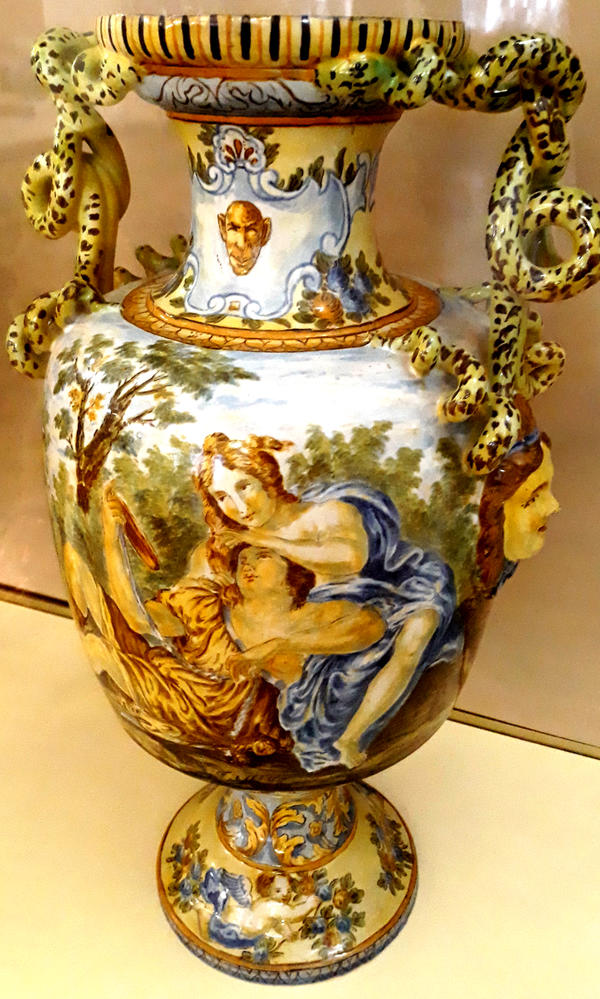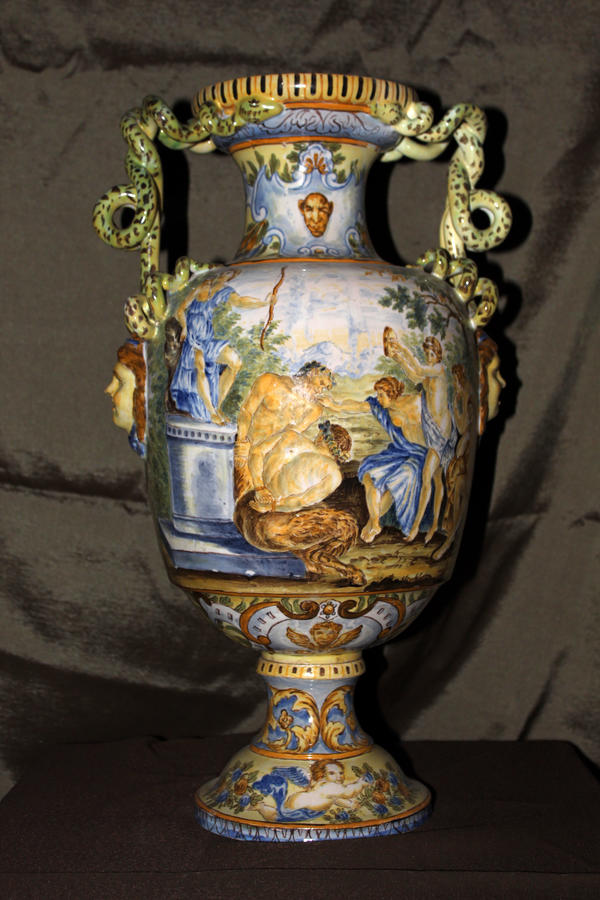After the Revolution of 1917, a large-scale nationalization of the noble estates began in the Tambov Governorate. The seized values were transferred to the provincial and city museums. Around this time, Tambov Art Museum, the future Regional Ethnography Museum received two Italian companion vases. The exact date of their creation could not be established; experts believe that they were made at the turn of the 17th and 18th centuries.
Both exhibits are created using majolica technique. At first, the artisan made the vase of clay: the new vases had natural shades ranging from light cream to terracotta. Then the vase was covered with the first layer of opaque glaze containing tin. It was painted over with decorative motives, and then, with another layer of glaze. The master could paint a vase in one color, or monochrome, or in many different colors. In order to preserve the brightness of the paints, the vase was burned at low temperatures. However, the results were unpredictable, as high temperatures revealed the paints’ hidden potential, so the paint could darken, change its tone or texture. The solidity of the walls depended on the quality of the burning. Usually a glazed coating on ceramics was no thicker than 0.15 to 0.3 millimeters. The shapes of such vessels were soft and rounded, with a shiny surface.
Majolica vases from the Tambov Regional Ethnography Museum were made in Siena, a small town in Tuscany. The vase handles are made in the form of snakes, with sculptured female heads under them.
This vase was restored in 2003 at the Igor Grabar All-Russia Art and Research Restoration Center. The restoration artist Elena Minina cleaned the entire surface of the vase from impurities, masticing the chips, and filled the cracks and breaches with a special gypsum polymer mixed with water. Then she toned the restored parts and fixed them with varnish.
Both exhibits are created using majolica technique. At first, the artisan made the vase of clay: the new vases had natural shades ranging from light cream to terracotta. Then the vase was covered with the first layer of opaque glaze containing tin. It was painted over with decorative motives, and then, with another layer of glaze. The master could paint a vase in one color, or monochrome, or in many different colors. In order to preserve the brightness of the paints, the vase was burned at low temperatures. However, the results were unpredictable, as high temperatures revealed the paints’ hidden potential, so the paint could darken, change its tone or texture. The solidity of the walls depended on the quality of the burning. Usually a glazed coating on ceramics was no thicker than 0.15 to 0.3 millimeters. The shapes of such vessels were soft and rounded, with a shiny surface.
Majolica vases from the Tambov Regional Ethnography Museum were made in Siena, a small town in Tuscany. The vase handles are made in the form of snakes, with sculptured female heads under them.
This vase was restored in 2003 at the Igor Grabar All-Russia Art and Research Restoration Center. The restoration artist Elena Minina cleaned the entire surface of the vase from impurities, masticing the chips, and filled the cracks and breaches with a special gypsum polymer mixed with water. Then she toned the restored parts and fixed them with varnish.




